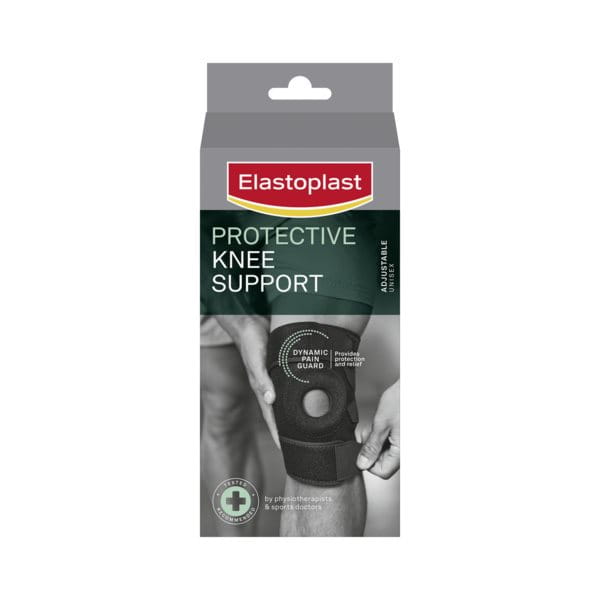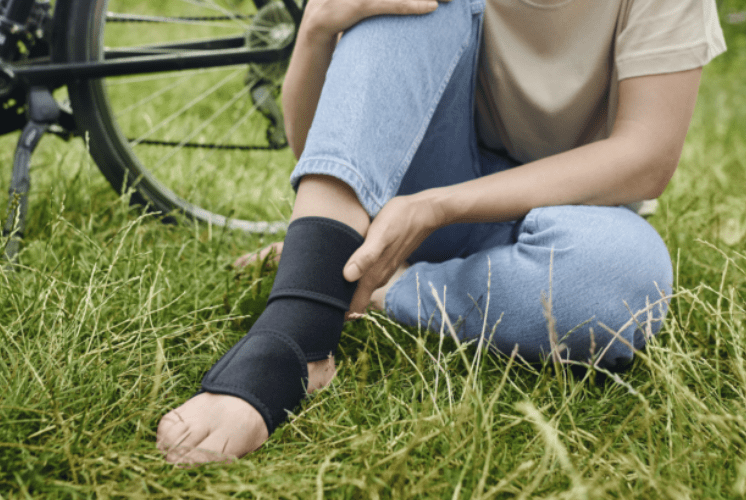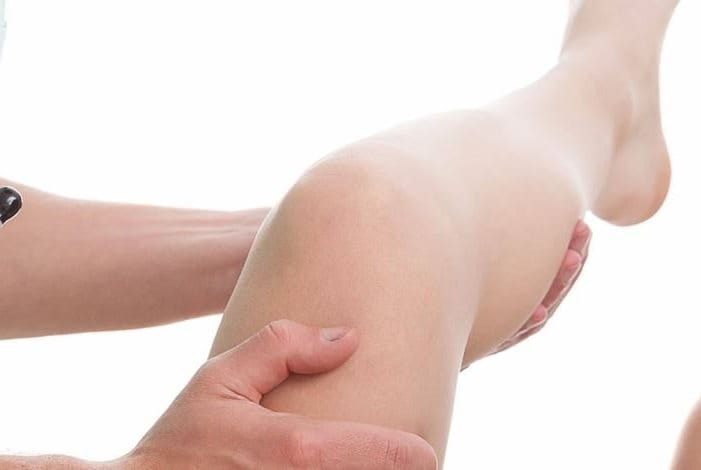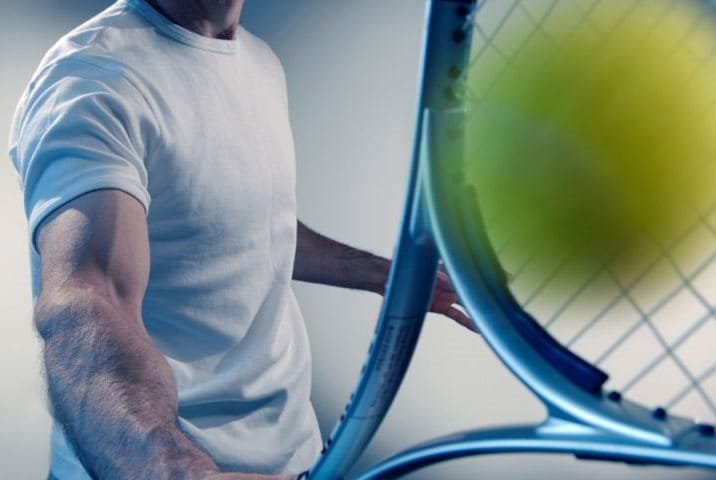A sprained knee is a common musculoskeletal injury that occurs when the ligaments in the knee are stretched or torn due to sudden twisting, overextension, or direct impact. The knee joint is supported and stabilised by several ligaments, and when they are damaged, it can lead to pain, swelling, and limited mobility.
Sprained knees are prevalent in sports and recreational activities that involve quick changes in direction or excessive stress on the knee joint. This includes activities such as weightlifting or running. Proper diagnosis and treatment are crucial for a full and speedy recovery and to prevent further complications ensure the knee's stability and function are restored.
Sprained knee symptoms
Symptoms of a sprained knee can vary in severity depending on the extent of the damage. At the time of injury, some individuals may hear a popping sensation, this can often be a sign of dislocation of the joint or a tear of the ligament. It is far easier to distinguish a sprain from dislocation than from a tear, which is covered further in this article. A dislocation of the knee will be deformed, as the bones will no longer align with one another.
Common signs and symptoms of a sprained knee may include:
- Pain: Mild to severe pain around the knee joint, often worsens with movement or weight-bearing.
- Swelling: Swelling and inflammation in and around the knee area.
- Bruising: Discoloration or bruising may appear due to internal bleeding within the knee tissues.
- Limited Range of Motion: Difficulty in fully bending or straightening the knee.
- Tenderness: The knee area may be tender to the touch.
- Stiffness: The knee may feel stiff and challenging to move.
- Difficulty Walking: Walking may be painful or difficult, depending on the severity of the sprain.
- Weakness: The knee and surrounding muscles may feel weak or unstable.
- Warmth and Redness: The skin around the knee may feel warm and appear reddened due to increased blood flow.
- Difficulty Weight Bearing: Difficulty putting weight on the affected leg.
Knee sprain vs tear
Knee sprain is an injury to one or more of the ligaments in the knee. Ligaments are tough bands of connective tissue that provide stability to the knee joint by connecting bones to each other. A sprain occurs when a ligament is stretched beyond its normal range or torn partially.
A knee tear on the other hand, generally refers to damage to the soft tissues inside the knee joint, such as the menisci (cartilage) or the cruciate ligaments (anterior cruciate ligament - ACL, posterior cruciate ligament - PCL). Tears can occur due to traumatic injury or degenerative changes over time.
Knee sprain vs strain
Knee sprains and strains are very similar to each other. They both involve overstretching or partial or complete tears of connective tissue. However the difference between them is that sprains involve injury to the ligaments, the cord of tissue that connect the bone joints together. Whereas strains are when the fibres of the connecting tissues that attach muscles to bones are affected.
Knee sprain recovery time
Recovery from a sprained knee very much depends on the severity of the sprain. The degree of a sprained joint (ankle, knee, wrist etc) is split into 3 grades which helps determine the length of time it can take to recover from the injury with a proper treatment and rehabilitation program.
- Grade 1 Knee Sprain: Mild stretching of the ligament without significant tearing. Recovery time can typically take 1 to 2 weeks.
- Grade 2 Knee Sprain: Partial tearing of the ligament, causing moderate instability. Recovery time can take approximately 4 to 8 weeks.
- Grade 3 Knee Sprain: This is the most damaging type of sprain. It is a severe or complete tearing of the ligament, leading to significant joint instability. The recovery time for this injury can be about 8 weeks or more, depending on the extent of the tear.
Sprained knee treatment
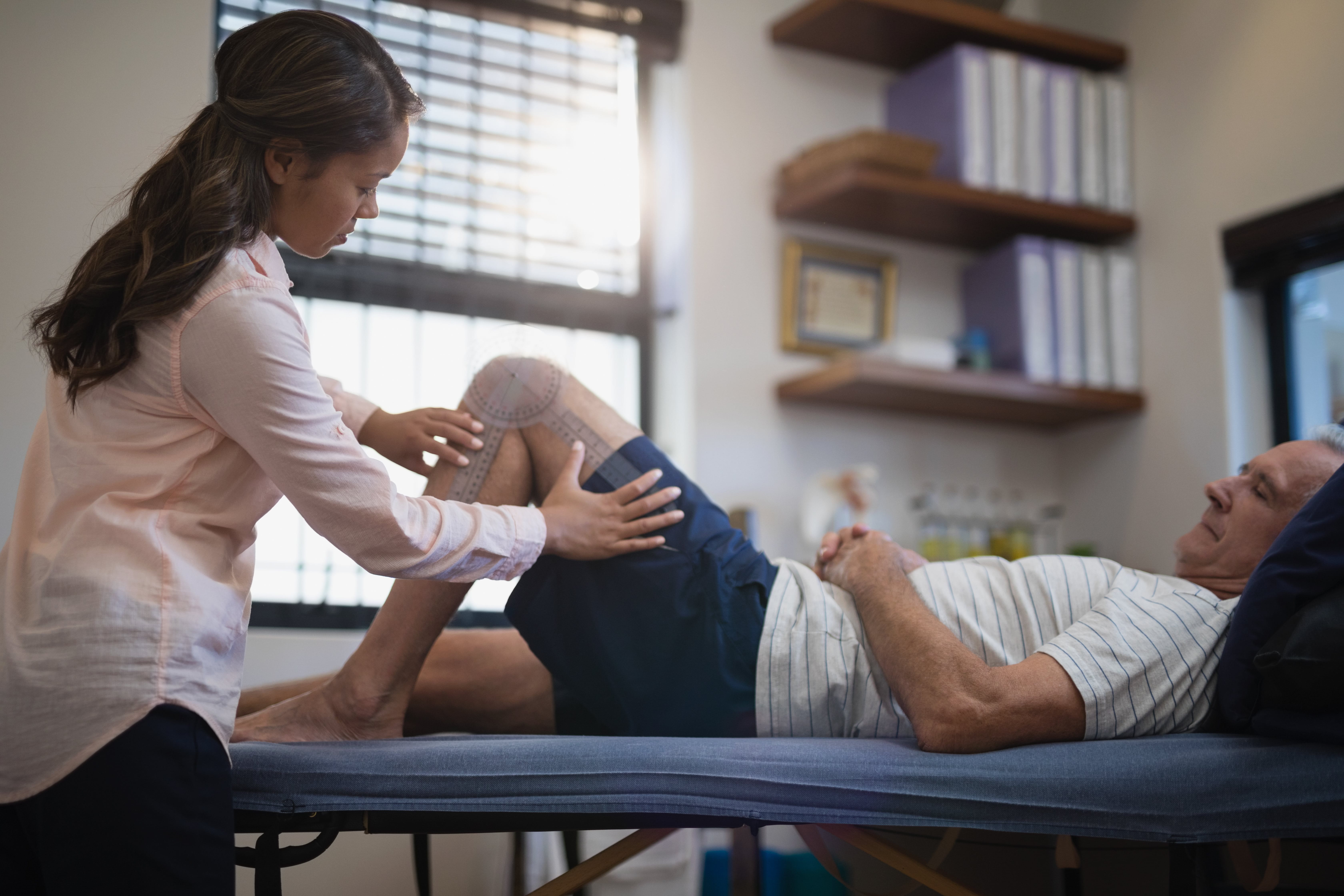
The immediate response to a sprained knee (or any joint for that matter) should be the RICE method. RICE stands for Rest, Ice, Compression, and Elevation, and it aims to minimise pain, reduce swelling, and promote healing. Follow the below steps to best support the initial recovery process.
- Rest: Rest is essential to prevent further stress on the injured area. Avoid activities that could worsen the injury, and allow the affected area to heal by limiting movement.
- Ice: Applying ice or a cold pack to the injured area helps reduce swelling and numb pain. Ice should be applied for 15-20 minutes every 1-2 hours during the first 48 hours after injury. Always wrap the ice pack in a cloth to prevent direct skin contact and potential frostbite.
- Compression: Compression involves wrapping the injured area with an elastic bandage or wrap. This helps control swelling by providing gentle pressure and support to the injured tissues. Be cautious not to wrap too tightly, as it could impede blood circulation.
- Elevation: Elevating the injured area above the level of the heart helps minimise swelling by allowing fluids to drain away from the injured site. For example, when treating a sprained knee, prop the leg up on pillows while lying down.
A healthcare professional can assess the extent of the sprain and recommend appropriate treatment. This may include wearing a brace, taking weight off of the knee by using crutches, and referring you to a physiotherapist to start rebuilding strength and stability for the joint.
When returning to physical activity it is best to start off light and then incrementally increase the intensity to build strength and stability back up. For knee injuries, it is best to wear a knee support. Elastoplast's Knee Supports help to provide strength, protection and support to stiff, weak, painful or injured joints. Wearing knee supports helps to improve blood circulation, supporting the recovery of leg muscles and assisting with prevention of further muscle damage.
Knee Sprain Exercises
There are a multitude of different exercises to help alleviate sprained knees and start building strength back up. Ideally these should be provided by a healthcare professional with a specialist designed plan specific to your knee injury. However, listed below are 5 exercises to get the recovery process started.
- Ankle Pumps: While lying down, gently flex and point your foot back and forth to improve blood circulation and prevent stiffness.
- Heel Slides: Lie on your back with your legs extended. Slowly bend your injured knee by sliding your heel towards your buttocks, then straighten it again.
- Quadriceps Sets (Isometric Contractions): Sit on a chair with your legs extended. Tighten the muscles on the front of your thigh, pressing the back of your knee into the chair. Hold for a few seconds and release.
- Hamstring Sets (Isometric Contractions): Sit on a chair with your legs extended. Bend your knee slightly and press your heel into the floor. Hold for a few seconds and release.
- Straight Leg Raises (Active Knee Extension): Lie on your back with one leg extended and the other bent. Slowly raise your injured leg off the ground a few inches, keeping your knee straight. Lower it back down.
Knee Sprain Prevention
Knee sprains can be caused by an ongoing chronic injury or a sudden acute injury, so although you will never be able to completely avoid a sprained knee, there are certain preventative measures you can take to minimise their impact.
Stretching or doing a little jog on the spot will help reduce tension in the muscles which reduces the chances of them being strained.
Additionally, starting the activity slowly and gradually increasing the intensity of exercise will allow your body to become used to it. This way of preventing injuries will increase blood flow and oxygen which provides nourishment to your body. If you’re starting a new activity or recovering from an injury this is particularly important.
Start doing knee strengthening exercises. Knee strengthening exercises offer a range of benefits. They help enhance stability and support around the knee joint, reducing the risk of injuries and pain. Improved muscle strength in the quadriceps, hamstrings, and calf muscles also aids in better joint alignment, which can alleviate knee discomfort and promote overall joint health. Additionally, these exercises can improve mobility, making it easier to perform daily activities and sports with greater ease and efficiency. Ultimately, knee strengthening exercises play a crucial role in preventing knee-related issues and maintaining long-term joint function and well-being.

.jpg?rx=0&ry=1286&rw=5760&rh=1267&hash=FF4F997BA0C281FC0E439EACC2DC1900)
